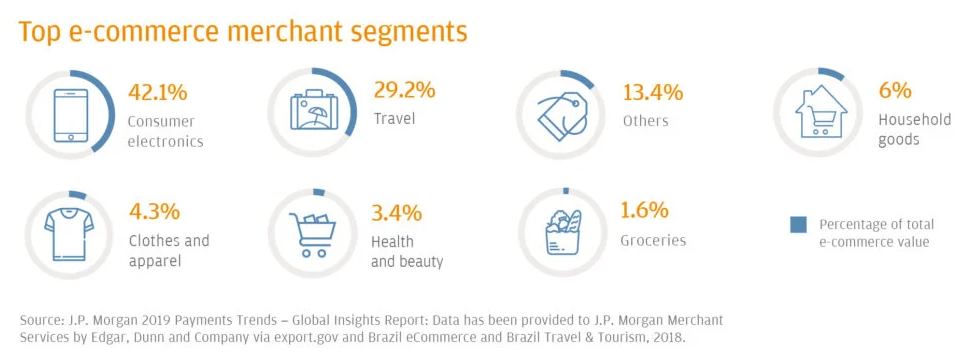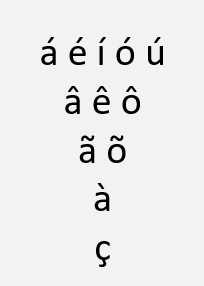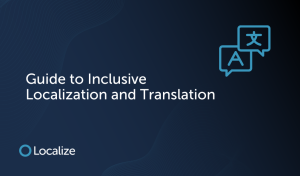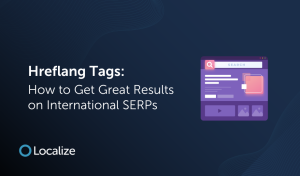Table of Contents
Brazil is the eighth largest economy in the world, and it has one of the fastest-growing eCommerce markets. For this reason, more and more companies are fine-tuning their marketing strategies for Brazilian audiences.
Should your company expand into Latin America’s biggest market? Let’s explore why and how you should localize for Brazil.
Why Localize for Brazil?
Substantial natural resources, a vast consumer base and major infrastructure investments make Brazil a promising market for foreign investment.
Brazil is an ECommerce Giant
Brazil’s burgeoning eCommerce market makes it an appealing place for foreign marketers and retailers.
Here’s what you should know about Brazil’s market:
- Revenue in the Brazilian eCommerce market is projected to reach $86 billion by 2025.
- Brazil is one of the most digital-friendly countries in the world. The number of internet users in Brazil is expected to reach 158 million by 2025.
- The top market segments in Brazil are consumer electronics and travel. The gaming market is also popular.
Brazilians are Savvy Online Shoppers
Online shopping is very popular in Brazil, with over 100 million people buying online in 2021. Here’s what you should know about Brazilian shoppers:
- Brazilians tend to do a lot of research online before making a purchase.
- A survey showed that 60% percent of Brazilian consumers were more likely to purchase products if the brands spoke to them in their native language: Brazilian Portuguese.
- The most popular mobile app in Brazil is WhatsApp, closely followed by Google Play, Google Search and YouTube. Android-based apps are overwhelmingly more popular than iOS apps.
- Online payments in Brazil are dominated by credit cards, which represent 69% of all online payments. The second most popular payment option is Boleto Bancário.
5 Localization Tips for Brazil
To capture the attention of Brazilians, you’ll need to adapt your existing product or service to meet local expectations. Apart from having a keen understanding of what kind of product or service will resonate with locals, you also need to practice effective translation and localization.
Here are our best localization tips for a Brazilian audience.
1. Think Beyond English
English isn’t widely spoken in Brazil. If your website is English-only, just 5% of the Brazilian population will be able to read it. Instead, you should translate your digital content to Brazil’s official language, Brazilian Portuguese.
2. Choose Adaptable Pricing and Payment Plans
Speaking of consumers, Brazilian shoppers are very comfortable with subscriptions and payment plans. To adapt to this market, offer plenty of payment options for your customers.
3. Embrace Seasonality
Seasonal celebrations like the Carnival festival are cultural touchstones in Brazil. To boost conversions, you should offer seasonal promotions and deals to your Brazilian audience.
4. Localize Social and SEO Strategy
Don’t forget to localize your social and SEO strategy for Brazil. Google is the most widely-used search engine there. Brazil’s most popular social media platforms include Whatsapp, Facebook, Twitter, Pinterest, TikTok and Instagram.
5. Obey Local Laws
As you market to Brazilian locals, be sure to obey nationwide internet regulations. Did you know that Brazil has consumer privacy laws much like Europe’s GDPR? The LGDP, or Brazilian Data Protection Law, protects the data of its consumers.
Designing for Brazil: UI Best Practices
As you build your Brazilian localization strategy, don’t forget to adapt your product’s user interface (UI) to the local preferences of Brazilians.
Here’s some advice to help you localize your website or mobile app UI for Brazil.
Localize All Site Elements
Brazilians strongly prefer digital experiences that match their local standards. And they aren‘t shy about leaving sites that display Americanized spelling or US dollars.
To avoid a high bounce rate, you’ll need to localize all elements of your site or app, including dates, time formats, metric measurements and numbers. In addition, you should localize currency to the Brazilian real (R$) and make sure you include popular payment methods.
Choose Fonts Wisely
When selecting a typeface for your user interface, make sure your font package is compatible with Brazilian Portuguese characters, punctuation marks and accents. Without these characters, your site or app will lack functionality for Brazilian users:
Informality is OK
Brazil has a friendly culture that many people consider to be quite casual. When designing for Brazilian audiences, infuse warmth and playful informality into your content to keep locals interested.
However, if your product or service relates to finance, law, or anything else that requires a more serious approach, a slightly more formal tone would be appropriate.
Be Mindful of Text Length
On average, Brazilian Portuguese is 30% lengthier than English text. This means you’ll need plenty of space in your user interface for the extra text. Make sure buttons, navigation menus and other important site elements are legible when they’re converted to Brazilian Portuguese.
Translating into Brazilian Portuguese
Before you launch in Brazil, you’ll need to translate your content into Brazilian Portuguese. If you don’t translate, you’ll be missing out on a lot of traffic: 95% of Brazilians won’t be able to read an English-only site.
There are an estimated 228 million native speakers of Portuguese around the world:
- Brazil: 209 million speakers
- Angola: 18 million speakers
- Portugal and Mozambique: 10 million speakers
Here are some helpful pointers to help you translate a website or app for the Brazilian market.
Choose the Right Variant: European Portuguese vs Brazilian Portuguese
Brazil was once a colony of Portugal, so the two regions share a common language. However, there are many regional differences. For example, Brazilians call a phone a celular, while people in Portugal would call it a telemovel. When targeting Brazil, be sure to use Brazilian Portuguese.
Don’t Forget About Accented Characters
Accent marks are very important in Brazilian Portuguese. For example, avó means grandmother, but avô means grandfather. If you ignore the accents and characters of this language, you’re bound to get a low-quality translation.
Go with Brasil, not Brazil
Be sure to spell the country’s name, Brasil, like the locals do. If you use the American spelling of Brazil, locals will instantly know that your content wasn’t made for them.
Hire Native Speakers and Local Experts
When translating for Brazil, you should avoid machine translations and literal, word-for-word translations. Professional translators can capture nuances and cultural context that might otherwise be missed by AI.
For example, things that seem innocuous to people in the US might not translate well in other places. Most Americans would be surprised to find out that the popular thumbs-up emoji 👍 is considered incredibly offensive in Brazil.
Hiring a local expert for translation and using a translation management system (TMS) can help you get culturally-appropriate Portuguese translations every time.
Build Success in Brazil with Localize
Are you ready to get started with your Brazilian localization project?
Localize can help you translate your website, application or mobile app into Brazilian Portuguese. With easy no-code installation, our TMS platform can help you start translating right away. After translating with Localize, customers reported 66% faster turnaround times, plus impressive increases in international traffic and revenue.
Contact Localize to jumpstart your success in the Brazilian market.









